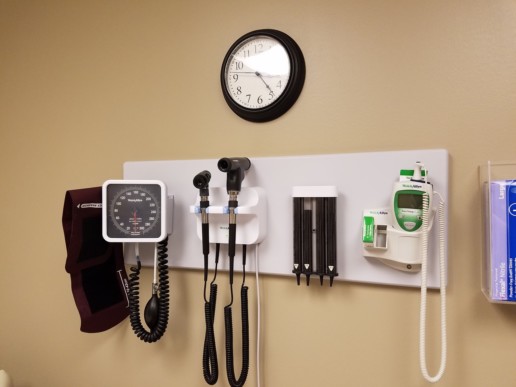Everything employers need to know about employee job classifications
FLSA job classifications can confuse even the most experienced HR managers. Continue reading this blog post for everything employers should know about employee job classifications.
Chief among the issues that keep employers up at night is staying compliant with federal and state employment laws.
Arguably, wage and hour rules are the most complex and cause the most issues for companies. Job classifications under the FLSA can confuse even the most experienced HR managers.
In fact, some of the costliest wage and hour lawsuits and penalties on record could have been avoided if only the employer properly classified an employee as either exempt or nonexempt. It’s critically important to understand the law — and the devil is in the details.
Exempt or nonexempt?
Most employers understand that an exempt employee is not entitled to receive overtime pay for hours worked in excess of forty hours per week, according to the provisions of the FLSA. Conversely, nonexempt employees are required to receive overtime pay and should be classified as nonexempt from these same overtime provisions.
While it may sound straightforward, figuring out an employee’s exempt status is not that simple. Different types of exemptions exist and each has its own unique set of requirements that are outlined in the FLSA. Most of these exemptions are specific to certain jobs or industries, for example, some exemptions only apply to specific types of agricultural workers, or to truck drivers who transport goods in interstate commerce. But for most businesses, exempt employees will usually fall into one of the following three exemption categories: executive, administrative and professional. Collectively, these are referred to as the white collar exemptions.
A common error that employers make is to classify all their salaried employees, or all employees with the word manager in their title, as exempt. Neither of these factors alone is enough to make the exempt designation. Each of the white-collar exemptions has two components: a salary requirement and a duties requirement. The salary requirement is the same for each of the three exemptions, but the duties requirements are different.
The salary basis test
For any employee to be considered exempt under any of the white-collar exemptions, they must be paid on a salary basis. This means that any employee who is paid by the hour, per day, or is commission-only, regardless of their title or position, will not meet the criteria for any of the white-collar exemptions. How the salary is paid as well as the amount are also subject to certain restrictions. The salary basis test determines the minimum amount, which is subject to change from time to time. The minimum salary is currently $455.00 per week (or $23,660 per year). This test also provides restrictions on when and how an employer can make deductions from an exempt employee’s salary.
An increase to the minimum salary per week from $455 to $913 (or $47,476 per year) was originally scheduled to go into effect back in December 2016, but industry groups against the measure successfully lobbied to block it. The U.S. Department of Labor is exploring alternatives that could appease these industry groups while keeping the regulations in line with the times. The DOL is scheduled to re-start the rulemaking process in March 2019, and prior statements of the current DOL Secretary, Alexander Acosta, suggest that the new rule may propose a more modest salary increase to around $634 per week (or around $33,000 per year).
Job duties
In addition to the salary, each white-collar exemption has its own unique set of duties requirements. Employers must look at the actual duties that each employee performs to determine whether they meet the criteria and their title or position does little to influence the outcome. So, simply naming an employee a manager does not automatically qualify the worker as an exempt employee. To be considered exempt under the executive exemption, which is the most common exemption for managers, this employee would need to supervise two or more full-time employees (or the equivalent) and have the authority to hire and fire employees. Otherwise, they would need to meet the requirements for one of the other exemptions to be paid in this manner.
Knowing that these regulations exist and being well-informed of the framework is the first step in understanding overtime obligations – and reducing wage and hour worries. Employers should seek a qualified employment law attorney for additional guidance on the specifics of each requirement to ensure compliance with applicable overtime laws.
SOURCE: Starkman, J.; Nadal, A. (15 February 2019) "Everything employers need to know about employee job classifications" (Web Blog Post). Retrieved from https://www.benefitnews.com/opinion/what-employers-need-to-know-about-job-classifications?brief=00000152-14a5-d1cc-a5fa-7cff48fe0001
Don’t Forget to Post OSHA Injury and Illness Data at Your Worksite
Employers who are covered by the Occupational Safety and Health Administration's (OSHA's) record-keeping rule must post a summary of 2018 work-related injury and illnesses in a noticeable place from Feb. 1 to April 30. Read this blog post from SHRM to learn more.
Employers that are covered by the Occupational Safety and Health Administration's (OSHA's) record-keeping rule must post a summary of 2018 work-related injury and illnesses in a noticeable place from Feb. 1 to April 30. Here are some compliance tips for employers to review.
Required Posting
Many employers with more than 10 employees—except for those in certain low-risk industries—must keep a record of serious work-related injuries and illnesses. But minor injuries that are treated only by first aid do not need to be recorded.
Employers must complete an incident report (Form 301) for each injury or illness and log work-related incidents on OSHA Form 300. Form 300A is a summary of the information in the log that must be posted in the worksite from Feb. 1 to April 30 each year.
"This information helps employers, workers and OSHA evaluate the safety of a workplace, understand industry hazards, and implement worker protections to reduce and eliminate hazards," according to OSHA's website.
Employers should note that they are required to keep a separate 300 log for each "establishment," which is defined as "a single physical location where business is conducted or where services or industrial operations are performed."
If employees don't work at a single physical location, then the establishment is the location from which the employees are supervised or that serves as their base.
Employers frequently ask if they need to complete and post Form 300A if there were no injuries at the relevant establishment. "The short answer is yes, " said Tressi Cordaro, an attorney with Jackson Lewis in Washington, D.C. "If an employer recorded no injuries or illnesses in 2018 for that establishment, then the employer must enter 'zero' on the total line."
Correct Signature
Before the OSHA Form 300A is posted in the worksite, a company executive must review it and certify that "he or she has examined the OSHA 300 Log and that he or she reasonably believes, based on his or her knowledge of the process by which the information was recorded, that the annual summary is correct and complete," according to OSHA.
A common mistake seen on 300A forms is that companies forget to have them signed, noted John Martin, an attorney with Ogletree Deakins in Washington, D.C.
There are only four company representatives who may certify the summary:
- An owner of the company.
- An officer of the corporation.
- The highest-ranking company official working at the site.
- The immediate supervisor of the highest-ranking company official working at the site.
Businesses commonly make the mistake of having an HR or safety supervisor sign the form, said Edwin Foulke Jr., an attorney with Fisher Phillips in Atlanta and Washington, D.C., and the former head of OSHA under President George W. Bush.
They need to get at least the plant manager to sign it, he said, noting that the representative who signs Form 300A must know how numbers in the summary were obtained.
Once the 300A form is completed, it should be posted in a conspicuous place where other employment notices are usually posted.
Electronic Filing
The Improve Tracking of Workplace Injuries and Illnesses rule requires covered establishments with at least 20 employees to also electronically submit Form 300A to OSHA.
Large establishments with 250 or more employees were also supposed to begin electronically submitting data from the 300 and 301 forms in 2018, but the federal government recently eliminated that requirement. However, those establishments still must electronically submit their 300A summaries.
The deadline to electronically submit 2018 information is March 2.
SOURCE: Nagele-Piazza, L. (1 February 2019) "Don’t Forget to Post OSHA Injury and Illness Data at Your Worksite" (Web Blog Post). Retrieved from https://www.shrm.org/resourcesandtools/legal-and-compliance/employment-law/pages/don%E2%80%99t-forget-to-post-osha-injury-and-illness-data-at-your-worksite.aspx/
U.S. Department of Labor's New Compliance Assistance Tool
On February 6, 2019, the U.S. Department of Labor announced the launch of the electronic version of their Compliance Assistance Tool (Handy Reference Guide to the Fair Labor Standards Act (FLSA)). This new version will assist employers by providing them with basic Wage and Hour Division (WHD) information, as well as links to other resources.
This electronic resource was created as a part of the WHD's efforts to modernize compliance assistance tools, as well as provide easy-to-use, accessible compliance information. In coexistence with worker.gov, employer.gov, and other online tools, this tool will help improve employer understanding of federal labor laws and regulations.
View the digital Compliance Assistance Tool here.
Read the DOL's full press release here.
SOURCE: U.S. Department of Labor (6 February 2019) "U.S. Department of Labor Announces New Compliance Assistance Tool" (Web Press Release). Retrieved from https://www.dol.gov/newsroom/releases/whd/whd20190206-0
Developing guidance could free employers from ACA mandate
A future path for employers to avoid ACA employer mandate penalties was outlined in a recent IRS notice. Read this blog post from Employee Benefits News to learn more.
A recent IRS notice provides a future path for employers to avoid ACA employer mandate penalties by reimbursing employees for a portion of the cost of individual insurance coverage through an employer-sponsored health reimbursement arrangement.
While the notice is not binding and at this stage is essentially a discussion of relevant issues, it does represent a significant departure from the IRS’s current position that an employer can only avoid ACA employer mandate penalties by offering a major medical plan.
Here is everything employers need to know.
Background: As described in more detail in a previous update, the ACA currently prohibits (except in limited circumstances) an employer from maintaining an HRA that reimburses the cost of premiums for individual health insurance policies purchased by employees in the individual market.
Proposed regulations issued by the IRS and other governmental agencies would eliminate this prohibition, allowing an HRA to reimburse the cost of premiums for individual health insurance policies (individual coverage HRA) provided that the employer satisfies certain conditions.
The preamble of the proposed regulations noted that the IRS would issue future guidance describing special rules that would permit employers who sponsor individual coverage HRAs to be in full compliance with the ACA’s employer mandate. As follow up, the IRS recently issued Notice 2018-88, which is intended to begin the process of developing guidance on this issue.
On a high level, the ACA’s employer mandate imposes two requirements in order to avoid potential tax penalties: offer health coverage to at least 95% of full-time employees (and dependents); and offer “affordable” health coverage that provides “minimum value” to each full-time employee (the terms are defined by the ACA and are discussed further in these previous updates).
Offering health coverage to at least 95% of full-time employees: Both the proposed regulations and notice provide that an individual coverage HRA plan constitutes an employer-sponsored health plan for employer mandate purposes. As a result, the proposed regulations and notice provide that an employer can satisfy the 95% offer-of-coverage test by making its full-time employees (and dependents) eligible for the individual coverage HRA plan.
Affordability: The notice indicates that an employer can satisfy the affordability requirement if the employer contributes a sufficient amount of funds into each full-time employee’s individual coverage HRA account. Generally, the employer would have to contribute an amount into each individual coverage HRA account such that any remaining premium costs (for self-only coverage) that would have to be paid by the employee (after exhausting HRA funds) would not exceed 9.86% (for 2019, as adjusted) of the employee’s household income.
Because employers are not likely to know the household income of their employees, the notice describes that employers would be able to apply the already-available affordability safe harbors to determine affordability as it relates to individual coverage HRAs. The notice also describes new safe harbors for employers that are specific to individual coverage HRAs, intending to further reduce administrative burdens.
Minimum value requirement: The notice explains that an individual coverage HRA that is affordable will be treated as providing minimum value for employer mandate purposes.
Next steps: Nothing is finalized yet. Employers are not permitted to rely on the proposed regulations or the notice at this time. The proposed regulations are aimed to take effect on Jan. 1, 2020, if finalized in a timely matter. The final regulations will likely incorporate the special rules contemplated by the notice (perhaps with even more detail). Stay tuned.
This article originally appeared on the Foley & Lardner website. The information in this legal alert is for educational purposes only and should not be taken as specific legal advice.
SOURCE: Simons, J.; Welle, N. (17 January 2019) "Developing guidance could free employers from ACA mandate" (Web Blog Post). Retrieved from https://www.benefitnews.com/opinion/developing-guidance-could-free-employers-from-aca-mandate?brief=00000152-14a5-d1cc-a5fa-7cff48fe0001
Compliance: Yearly Deadlines for Health Plans
Do you offer group health plans coverage to your employees? Employers that provide coverage are subject to multiple compliance requirements throughout the year. Certain requirements have been around for many years, while others have been recently added by the Affordable Care Act (ACA).
Continue reading for a summary of the many compliance requirements and their associated deadlines that health plan providers should be aware of throughout the year. Certain deadlines for non-calendar year plans may vary from what is outlined in this summary. This summary only covers recurring calendar year compliance deadlines. Other requirements that are not based on the calendar year are not included below.
January
| Deadline | Requirement | Description |
|
January 31 |
Form W-2 | Deadline for providing Forms W-2 to employees. The ACA requires employers to report the aggregate cost of employer-sponsored group health plan coverage on their employees’ Forms W-2. The purpose is to provide employees with information on how much their health coverage costs. Certain types of coverage are not required to be reported on Form W-2.
This Form W-2 reporting requirement is currently optional for small employers (those who file fewer than 250 Forms W-2). Employers that file 250 or more Forms W-2 are required to comply with the ACA’s reporting requirement. |
| January 31 | Form 1095-C or Form 1095-B—Annual Statement to Individuals | Applicable large employers (ALEs) subject to the ACA’s employer shared responsibility rules must furnish Form 1095-C (Section 6056 statements) annually to their full-time employees. Employers with self-insured health plans that are not ALEs must furnish Form 1095-B (Section 6055 statements) annually to covered employees.
The Forms 1095-B and 1095-C are due on or before Jan. 31 of the year immediately following the calendar year to which the statements relate. Extensions may be available in certain limited circumstances. However, an alternate deadline generally is not available for ALEs that sponsor non-calendar year plans.
Update: The IRS extended the deadline for furnishing the 2018 employee statements, from Jan. 31, 2019, to March 4, 2019. |
February
| Deadline | Requirement | Description |
|
February 28 (March 31, if filing electronically) |
Section 6055 and 6056 Reporting | Under Section 6056, ALEs subject to the ACA’s employer shared responsibility rules are required to report information to the IRS about the health coverage they offer (or do not offer) to their full-time employees. ALEs must file Form 1094-C and Form 1095-C with the IRS annually.
Under Section 6055, self-insured plan sponsors are required to report information about the health coverage they provided during the year. Self-insured plan sponsors must generally file Form 1094-B and Form 1095-B with the IRS annually. ALEs that sponsor self-insured plans are required to report information to the IRS under Section 6055 about health coverage provided, as well as information under Section 6056 about offers of health coverage. ALEs that sponsor self-insured plans will generally use a combined reporting method on Form 1094-C and Form 1095-C to report information under both Sections 6055 and 6056. All forms must be filed with the IRS annually, no later than Feb. 28 (March 31, if filed electronically) of the year following the calendar year to which the return relates. Reporting entities that are filing 250 or more returns must file electronically. There is no alternate filing date for employers with non-calendar year plans. |
March
| Deadline | Requirement | Description |
|
March 1 (calendar year plans) |
Medicare Part D Disclosure to CMS | Group health plan sponsors that provide prescription drug coverage to Medicare Part D eligible individuals must disclose to the Centers for Medicare & Medicaid Services (CMS) whether prescription drug coverage is creditable or not. In general, a plan’s prescription drug coverage is considered creditable if its actuarial value equals or exceeds the actuarial value of the Medicare Part D prescription drug coverage. Disclosure is due:
Plan sponsors must use the online disclosure form on the CMS Creditable Coverage webpage. |
July
| Deadline | Requirement | Description |
|
July 31 |
PCORI Fee | Deadline for filing IRS Form 720 and paying Patient-Centered Outcomes Research Institute (PCORI) fees for the previous year. For insured health plans, the issuer of the health insurance policy is responsible for the PCORI fee payment. For self-insured plans, the PCORI fee is paid by the plan sponsor.
The PCORI fees are temporary—the fees do not apply to plan years ending on or after Oct. 1, 2019. This means that, for calendar year plans, the PCORI fees do not apply for the 2019 plan year. |
|
July 31 |
Form 5500 | Plan administrators of ERISA employee benefit plans must file Form 5500 by the last day of the seventh month following the end of the plan year, unless an extension has been granted. Form 5500 reports information on a plan’s financial condition, investments and operations. Form 5558 is used to apply for an extension of two and one-half months to file Form 5500.
Small health plans (fewer than 100 participants) that are fully insured, unfunded or a combination of insured/unfunded, are generally exempt from the Form 5500 filing requirement. The Department of Labor’s (DOL) website and the latest Form 5500 instructions provide information on who is required to file and detailed information on filing. |
September
| Deadline | Requirement | Description |
|
September 30 |
Medical Loss Ratio (MLR) Rebates | The deadline for issuers to pay medical loss ratio (MLR) rebates for the 2014 reporting year and beyond is Sept. 30. The ACA requires health insurance issuers to spend at least 80 to 85 percent of their premiums on health care claims and health care quality improvement activities. Issuers that do not meet the applicable MLR percentage must pay rebates to consumers.
Also, if the rebate is a “plan asset” under ERISA, the rebate should, as a general rule, be used within three months of when it is received by the plan sponsor. Thus, employers who decide to distribute the rebate to participants should make the distributions within this three-month time limit. |
|
September 30 |
Summary Annual Report | Plan administrators must automatically provide participants with the summary annual report (SAR) within nine months after the end of the plan year, or two months after the due date for filing Form 5500 (with approved extension).
Plans that are exempt from the annual 5500 filing requirement are not required to provide an SAR. Large, completely unfunded health plans are also generally exempt from the SAR requirement. |
October
| Deadline | Requirement | Description |
|
October 15 |
Medicare Part D – Creditable Coverage Notices | Group health plan sponsors that provide prescription drug coverage to Medicare Part D eligible individuals must disclose whether the prescription drug coverage is creditable or not. Medicare Part D creditable coverage disclosure notices must be provided to participants before the start of the annual coordinated election period, which runs from Oct. 15-Dec. 7 of each year. Coverage is creditable if the actuarial value of the coverage equals or exceeds the actuarial value of coverage under Medicare Part D. This disclosure notice helps participants make informed and timely enrollment decisions.
Disclosure notices must be provided to all Part D eligible individuals who are covered under, or apply for, the plan’s prescription drug coverage, regardless of whether the prescription drug coverage is primary or secondary to Medicare Part D. Model disclosure notices are available on CMS’ website. |
Annual Notices
| Type of Notice | Description |
| WHCRA Notice | The Women’s Health and Cancer Rights Act (WHCRA) requires group health plans that provide medical and surgical benefits for mastectomies to also provide benefits for reconstructive surgery. Group health plans must provide a notice about the WHCRA’s coverage requirements at the time of enrollment and on an annual basis after enrollment. The initial enrollment notice requirement can be satisfied by including the information on WHCRA’s coverage requirements in the plan’s summary plan description (SPD). The annual WHCRA notice can be provided at any time during the year. Employers with open enrollment periods often include the annual notice with their open enrollment materials. Employers that redistribute their SPDs each year can satisfy the annual notice requirement by including the WHCRA notice in their SPDs.
Model language is available in the DOL’s compliance assistance guide. |
| CHIP Notice | If an employer’s group health plan covers residents in a state that provides a premium subsidy under a Medicaid plan or CHIP, the employer must send an annual notice about the available assistance to all employees residing in that state. the annual CHIP notice can be provided at any time during the year. Employers with annual enrollment periods often provide CHIP notice with their open enrollment materials.
The DOL has a model notice that employers may use. |
| Group health plans and health insurance issuers are required to provide an SBC to applicants and enrollees each year at open enrollment or renewal time. The purpose of the SBC is to allow individuals to easily compare their options when they are shopping for or enrolling in health plan coverage. Federal agencies have provided a template for the SBC, which health plans and issuers are required to use.
The issuer for fully insured plans usually prepares the SBC. If the issuer prepares the SBC, an employer is not also required to prepare an SBC for the health plan, although the employer may need to distribute the SBC prepared by the issuer. The SBC must be included in open enrollment materials. If renewal is automatic, the SBC must be provided no later than 30 days prior to the first day of the new plan year. However, for insured plans, if the new policy has not yet been issued 30 days prior to the beginning of the plan year, the SBC must be provided as soon as practicable, but no later than seven business days after the issuance of the policy. |
|
| Grandfathered Plan Notice | To maintain a plan’s grandfathered status, the plan sponsor or must include a statement of the plan’s grandfathered status in plan materials provided to participants describing the plan’s benefits (such as the summary plan description, insurance certificate and open enrollment materials). The DOL has provided a model notice for grandfathered plans. This notice only applies to plans that have grandfathered status under the ACA. |
| Notice of Patient Protections | If a non-grandfathered plan requires participants to designate a participating primary care provider, the plan or issuer must provide a notice of patient protections whenever the SPD or similar description of benefits is provided to a participant. This notice is often included in the SPD or insurance certificate provided by the issuer (or otherwise provided with enrollment materials).
The DOL provided a model notice of patient protections for plans and issuers to use. |
| HIPAA Privacy Notice | The HIPAA Privacy Rule requires self-insured health plans to maintain and provide their own privacy notices. Special rules, however, apply for fully insured plans. Under these rules, the health insurance issuer, and not the health plan itself, is primarily responsible for the privacy notice.
Self-insured health plans are required to send the privacy notice at certain times, including to new enrollees at the time of enrollment. Thus, the privacy notice should be provided with the plan’s open enrollment materials. Also, at least once every three years, health plans must either redistribute the privacy notice or notify participants that the privacy notice is available and explain how to obtain a copy. The Department of Health and Human Services (HHS) has model Privacy Notices for health plans to choose from. |
| HIPAA Special Enrollment Notice | At or prior to the time of enrollment, a group health plan must provide each eligible employee with a notice of his or her special enrollment rights under HIPAA. This notice should be included with the plan’s enrollment materials. It is often included in the health plan’s SPD or insurance booklet. Model language is available in the DOL’s compliance assistance guide. |
| Wellness Notice HIPAA | Employers with health-contingent wellness programs must provide a notice that informs employees that there is an alternative way to qualify for the program’s reward. This notice must be included in all plan materials that describe the terms of the wellness program. If wellness program materials are being distributed at open enrollment (or renewal time), this notice should be included with those materials. Sample language is available in the DOL’s compliance assistance guide. |
| Wellness Notice ADA | To comply with the Americans with Disabilities Act (ADA), wellness plans that collect health information or involve medical exams must provide a notice to employees that explains how the information will be used, collected and kept confidential. Employees must receive this notice before providing any health information and with enough time to decide whether to participate in the program. Employers that are implementing a wellness program for the upcoming plan year should include this notice in their open enrollment materials. The Equal Employment Opportunity Commission has provided a sample notice for employers to use. |
Resources: https://www.ada.gov/; https://www.dol.gov/; https://www.hhs.gov/hipaa/for-professionals/privacy/guidance/model-notices-privacy-practices/index.html; https://www.cms.gov/Medicare/Prescription-Drug-Coverage/CreditableCoverage/Model-Notice-Letters.html; https://www.irs.gov/retirement-plans/retirement-plan-participant-notices-when-the-end-of-the-plan-year-has-passed; https://www.cms.gov/cciio/programs-and-initiatives/health-insurance-market-reforms/medical-loss-ratio.html; https://www.dol.gov/sites/default/files/ebsa/about-ebsa/our-activities/resource-center/publications/compliance-assistance-guide.pdf; https://www.dol.gov/agencies/ebsa/laws-and-regulations/laws/affordable-care-act/for-employers-and-advisers/preexisting-condition-exclusions; https://www.dol.gov/agencies/ebsa/laws-and-regulations/laws/affordable-care-act/for-employers-and-advisers/summary-of-benefits; https://www.dol.gov/agencies/ebsa/laws-and-regulations/laws/chipra/working-group; https://www.dol.gov/agencies/ebsa/laws-and-regulations/laws/whcra; https://www.dol.gov/agencies/ebsa/employers-and-advisers/plan-administration-and-compliance/reporting-and-filing/forms; https://www.irs.gov/newsroom/patient-centered-outcomes-research-institute-fee; https://www.irs.gov/affordable-care-act/individuals-and-families/form-1095-b-what-you-need-to-do-with-this-form; https://www.irs.gov/affordable-care-act/individuals-and-families/form-1095-c-what-you-need-to-do-with-this-form; https://www.cms.gov/Medicare/Prescription-Drug-Coverage/CreditableCoverage/index.html?redirect=/CreditableCoverage/; https://www.irs.gov/affordable-care-act/questions-and-answers-on-information-reporting-by-health-coverage-providers-section-6055; https://www.irs.gov/affordable-care-act/employers/questions-and-answers-on-reporting-of-offers-of-health-insurance-coverage-by-employers-section-6056; https://www.irs.gov/forms-pubs/about-form-w-2;
The do’s and don’ts of ADA accommodations: 3 new rulings
More than 25,000 ADA charges were filed by the EEOC in the past year, despite employers best compliance efforts. Continue reading this blog post to learn more.
Employers are facing more disability discrimination lawsuits than ever – despite their best compliance efforts.
In the past year alone, over 25,000 ADA charges were filed by the EEOC.
The right way to accommodate
One area that’s often a point of contention? The accommodation process. Workers and employers can have a very different idea of how a disability should be accommodated.
And while each disability needs to be evaluated on a case by case basis, several recent court rulings shed further light on employers’ ADA accommodation responsibilities.
1. In Brumley v. United Parcel Service, a court ruled that ADA accommodations don’t necessarily have to be given to employees immediately.
Melissa Brumley delivered packages for UPS when she hurt her back lifting a heavy box from her truck.
She took leave to heal, and her doctor said when she returned to work she could no longer lift packages or drive. Since these were two essential functions of her job, Brumley’s manager put her on leave while waiting on more information from her doctor.
After beginning the interactive process and considering a reassignment, Brumley’s doctor cleared her to go back to her old job, and UPS ended the process.
But Brumley sued the company for failing to accommodate her during those weeks she was on leave, which resulted in loss of pay.
A district court ruled in favor of UPS, and on appeal, the 6th Circuit agreed. It said just because the company didn’t accommodate the employee immediately didn’t mean it violated the ADA.
UPS began the interactive process and only stopped once Brumley was cleared to go back to her old job without an accommodation.
The key things the company did? Beginning the process and requesting additional info from Brumley’s doctor – this showed the court a good faith effort to comply with the ADA.
2. In Sharbono v. Northern States Power, a court ruled a company that failed to find an accommodation didn’t fail to fulfill its ADA duties.
After a foot injury, James Sharbono wasn’t able to wear the steel-toed boots required by his company’s safety procedures.
HR worked with Sharbono and suggested several accommodations, such as altering his boots and getting a custom pair made, but none worked out. Sharbono was forced to retire, and he sued for ADA violation.
But the 8th Circuit ruled the company acted in good faith. It worked with Sharbono and suggested several accommodations. It was only after exhausting all options that Sharbono was forced to retire. The court said the company fulfilled its ADA responsibilities, despite finding no accommodation for Sharbono.
3. In Stokes v. Nielsen, a court decided companies can be required to make accommodations that cover more than just essential job functions.
Jacqueline Stokes had impaired vision and received multiple accommodations that allowed her to do her job. Stokes then requested special meeting handouts, printed in large letters, that she could read beforehand.
Despite many promises from HR, Stokes never received her requested handouts. She sued, claiming to be denied a reasonable accommodation under the ADA.
While the company argued it gave Stokes everything she needed to do her job, therefore fulfilling its ADA responsibilities, the Fifth Circuit disagreed.
“Our circuit has explicitly rejected the requirement that requested modifications must be necessary to perform essential job functions to constitute a reasonable accommodation,” it said. And Stokes’ request was deemed reasonable.
This case shows if an employee makes a reasonable request for their job, it’s easier to just grant it.
SOURCE: Mucha, R. (4 January 2019) "The do’s and don’ts of ADA accommodations: 3 new rulings" (Web Blog Post). Retrieved from https://www.hrmorning.com/the-dos-and-donts-of-ada-accommodations-3-new-rulings/
DOL reverses course on ‘80/20’ limitations for tipped employees
On November 8, the Department of Labor (DOL) released four new opinion letters, providing insight into their views on compliance with federal labor laws. Read this blog post to learn more.
Last week, the DOL issued four new opinion letters providing both employers and employees further insight into the agency’s views regarding compliance with federal labor laws.
While the letters touch on a variety of issues, perhaps the most notable change involves the DOL’s about-face regarding the amount of “non-tipped” work an employee can perform while still receiving a lower “tip-credit” wage.
Essentially, this new guidance does away with the previous “80/20” rule regarding tipped employees. Under the 80/20 rule, businesses were barred from paying employees traditionally engaged in tip-based work, like servers and bartenders, a lower minimum wage and taking a tip credit for the other portion of the employee’s wage up to applicable state and federal minimum wage requirements when those employees’ side work, like napkin folding or making coffee, accounted for more than 20% of the employee’s time.
In recent years, there has been an explosion of litigation across the country over the 80/20 rule, questioning whether the tipped employee’s “side work” amounted to more than 20% of the employee’s duties and time. Likewise, in many of those same suits, plaintiffs would challenge individual tasks associated with their side work, attempting to claim that those tasks were not so closely related to their tipped duties, but rather rose to the level of a completely different or “dual job,” meaning that the employer should not be permitted to take the tip credit for hours worked performing those tasks.
What followed was case after case of lawyers, courts and employers quibbling over minutes spent folding napkins, wiping counters, slicing lemons, and painstakingly calculating and arguing as to whether those tasks added up to 20% and whether those tasks were not closely related enough to be included in the 20% calculation.
In these kinds of cases, we’d see arguments over circumstances like the server that moonlights as a “maintenance man” versus the server that changed the lightbulb or helped sweep underneath the tables.
The ultimate result: confusion, chaos and, frankly, a treasure trove for plaintiff’s attorneys who had another arrow in their quiver in which to seek additional purported wages for clients from employers that would find it difficult, if not impossible, to account for all minutes and tasks employees were performing in busy restaurants.
Following the DOL’s opinion letter, the landscape will change. Recognizing that the existing guidance and case law had created “some confusion,” the DOL expressly stated that they “do not intend to place a limitation on the amount of duties related to a tip-producing occupation that may be performed, so long as they are performed contemporaneously with direct customer-service duties...”
However, in attempting to provide additional clarity, the DOL may have instead opened up the proverbial Pandora ’s Box of uncertainty. In identifying the list of duties that the DOL would consider “core or supplemental,” the DOL refers to the Tasks section of the Details report in the Occupational Information Network (O*NET). It goes without saying that no document can provide an exhaustive list of tasks in today’s changing marketplace. While the DOL attempted to recognize the changing nature of today’s environment in a savings-type footnote, one does not have to look too far ahead to foreshadow the response from the plaintiff’s bar arguing over the related duties listed on O*NET.
While the DOL’s new position on the 80/20 rule will certainly come as a relief to many employers with tipped employees, employers should still be mindful in evaluating tipped employees’ job duties on a regular basis. Employees that are engaged in “dual jobs” are entitled to the full minimum wage, without the tip credit.
SOURCE: Kennedy, C. (15 November 2018) "DOL reverses course on ‘80/20’ limitations for tipped employees" (Web Blog Post). Retrieved from https://www.benefitnews.com/opinion/dol-reverses-course-on-80-20-limitations-for-tipped-employees?brief=00000152-14a5-d1cc-a5fa-7cff48fe0001
This article originally appeared on the Foley & Lardner website. The information in this legal alert is for educational purposes only and should not be taken as specific legal advice.
Oct. 15 Deadline Nears for Medicare Part D Coverage Notices
Are you prepared for the Medicare Part D coverage notice deadline? Plan sponsors that offer prescription drug coverage must provide notices to Medicare-eligible individuals before October 15. Read on to learn more.
Plan sponsors that offer prescription drug coverage must provide notices of "creditable" or "non-creditable" coverage to Medicare-eligible individuals before each year's Medicare Part D annual enrollment period by Oct. 15.
Prescription drug coverage is creditable when it is at least actuarially equivalent to Medicare's standard Part D coverage and non-creditable when it does not provide, on average, as much coverage as Medicare's standard Part D plan.
The notice obligation is not limited to retirees and their dependents covered by the employers' plan, but also includes Medicare-eligible active employees and their dependents and Medicare-eligible COBRA participants and their dependents.
Background
The Medicare Prescription Drug, Improvement, and Modernization Act of 2003 requires group health plan sponsors that provide prescription drug coverage to disclose annually to individuals eligible for Medicare Part D whether the plan's coverage is creditable or non-creditable.
The Centers for Medicare & Medicaid Services (CMS) has provided a Creditable Coverage Simplified Determination method that plan sponsors can use to determine if a plan provides creditable coverage.
Disclosure of whether their prescription drug coverage is creditable allows individuals to make informed decisions about whether to remain in their current prescription drug plan or enroll in Medicare Part D during the Part D annual enrollment period.
Individuals who do not enroll in Medicare Part D during their initial enrollment period, and who subsequently go at least 63 consecutive days without creditable coverage (e.g., because they dropped their creditable coverage or have non-creditable coverage) generally will pay higher premiums if they enroll in a Medicare drug plan at a later date.
Who Must Receive the Notice?
The notice must be provided to all Medicare-eligible individuals who are covered under, or eligible for, the sponsor's prescription drug plan, regardless of whether the plan pays primary or secondary to Medicare. Thus, the notice obligation is not limited to retirees and their dependents but also includes Medicare-eligible active employees and their dependents and Medicare-eligible COBRA participants and their dependents.
Notice Requirements
The Medicare Part D annual enrollment period runs from Oct. 15 to Dec. 7. Each year, before the enrollment period begins (i.e., by Oct. 14), plan sponsors must notify Medicare-eligible individuals whether their prescription drug coverage is creditable or non-creditable. The Oct. 15 deadline applies to insured and self-funded plans, regardless of plan size, employer size or grandfathered status.
Part D eligible individuals must be given notices of the creditable or non-creditable status of their prescription drug coverage:
- Before an individual's initial enrollment period for Part D.
- Before the effective date of coverage for any Medicare-eligible individual who joins an employer plan.
- Whenever prescription drug coverage ends or creditable coverage status changes.
- Upon the individual's request.
According to CMS, the requirement to provide the notice prior to an individual's initial enrollment period will also be satisfied as long as the notice is provided to all plan participants each year before the beginning of the Medicare Part D annual enrollment period.
| An EGWP exception
Employers that provide prescription drug coverage through a Medicare Part D Employer Group Waiver Plan (EGWP) are not required to provide the creditable coverage notice to individuals eligible for the EGWP. |
The required notices may be provided in annual enrollment materials, separate mailings or electronically. Whether plan sponsors use the CMS model notices or other notices that meet prescribed standards, they must provide the required disclosures no later than Oct. 14, 2017.
Model notices that can be used to satisfy creditable/non-creditable coverage disclosure requirements are available in both English and Spanish on the CMS website.
Plan sponsors that choose not to use the model disclosure notices must provide notices that meet prescribed content standards. Notices of creditable/non-creditable coverage may be included in annual enrollment materials, sent in separate mailings or delivered electronically.
| What if no prescription drug coverage is offered?
Because the notice informs individuals whether their prescription drug coverage is creditable or non-creditable, no notice is required when prescription drug coverage is not offered. |
Plan sponsors may provide electronic notice to plan participants who have regular work-related computer access to the sponsor's electronic information system. However, plan sponsors that use this disclosure method must inform participants that they are responsible for providing notices to any Medicare-eligible dependents covered under the group health plan.
Electronic notice may also be provided to employees who do not have regular work-related computer access to the plan sponsor's electronic information system and to retirees or COBRA qualified beneficiaries, but only with a valid email address and their prior consent. Before individuals can effectively consent, they must be informed of the right to receive a paper copy, how to withdraw consent, how to update address information, and any hardware/software requirements to access and save the disclosure. In addition to emailing the notice to the individual, the sponsor must also post the notice (if not personalized) on its website.
| Don't forget the disclosure to CMS
Plan sponsors that provide prescription drug coverage to Medicare-eligible individuals must also disclose to CMS annually whether the coverage is creditable or non-creditable. This disclosure must be made no more than 60 days after the beginning of each plan year—generally, by March 1. The CMS disclosure obligation applies to all plan sponsors that provide prescription drug coverage, even those that do not offer prescription drug coverage to retirees. |
SOURCE: Chan, K.; Stover, R. (10 September 2018) "Oct. 15 Deadline Nears for Medicare Part D Coverage Notices" (Web Blog Post). Retrieved from https://www.shrm.org/resourcesandtools/hr-topics/benefits/pages/medicare-d-notice-deadline.aspx/
Consequences and/or Remedies for Late or Missing Form 5500s
The Form 5500 deadline is approaching quickly. Below, Employee Benefits Corporation discusses the three different options employers have if they fail to file their Form 5500 or if they file late.
The Form 5500 is due on the last day following seven months after the end of the plan year. In order to be granted an extension, the employer would have to send the IRS a Form 5558 for each plan subject to Form 5500 obligations. The Form 5558 needs to be postmarked by the original due date or it will be rejected.
Failure to file or failure to file required Form 5500s on time can prove to be costly for an employer as daily penalties are assessed for late or missing filings.
What should an employer do if they find out they never filed a Form 5500 or they failed to file the Form 5500 by the deadline?
The employer should consider their risk tolerance, the number of plans they have not filed and the potential penalties to determine what the best course of action is for them.
They have three options:
- Do not file and hope that no one questions them if they are audited. There is a potential consequence of $300/day for each plan (per plan/ per plan year) that did not get filed or get filed on time. Penalties capped at $30,000 per year.
- File late and hope that no one notices. There is a potential consequence of $50/day for each plan (per plan/per plan year) that filed late or not on time. No cap on the penalty in this case.
- File late under the Delinquent Filers Voluntary Compliance Program (DFVCP). There is late fee of $10/day for each plan (per plan per plan year) that is filing late. Penalties capped at $2,000 per large plan/$750 per small plan if filing multiple plan years for a plan. Penalties for large plans that file more than 1 delinquent plan year per plan number filing at the same time, the maximum penalty is $4,000 per plan and $1,500 for small plans.
The Bottom Line:
Employee Benefits Corporation can assist employers with the preparation of their delinquent Form 5500s as part of our Compliance Services offerings. Employers will pay the DFVCP penalties directly to the DOL online as part of the process. We can help educate the employer on the risk factors associated with each approach and to assist, if contracted to do so, in the preparation of the Form 5500s.
SOURCE:
Employee Benefits Corporation (29 June 2018) "Consequences and/or Remedies for Late or Missing Form 5500s" [Web Blog Post]. Retrieved from https://www.ebcflex.com/Education/ComplianceBuzz/tabid/1140/ArticleID/613/Consequences-and-or-Remedies-for-Late-or-Missing-Form-5500s.aspx?utm_source=7.19.18+Need+to+Know+%7C+Missing+Form+5500s&utm_campaign=7-19-18_Need+to+Know+email-Form+5500+season&utm_medium=email
Change to 2018 HSA Family Contribution Limit
Yesterday, the IRS released a bulletin that includes a change impacting contributions to Health Savings Accounts (HSAs).
- The family maximum HSA contribution limit has decreased from $6,900 to$6,850.
- This change is effective January 1, 2018 and for the entire 2018 calendar year.
- The self-only maximum HSA contribution limit has not changed.
- This means that current 2018 HSA contribution limits are $3,450 (self-only) and $6,850 (family).
Why is the change happening so abruptly?
The IRS continues to make adjustments to accommodate the new tax law that passed at the end of 2017. Tax reform updates require the IRS to implement a modified method of calculating inflation-adjusted or cost-of-living-adjusted limits for 2018. The IRS is now using a different index (Chained Consumer Price Index for All Urban Consumers) to calculate benefit-related inflationary adjustments.
Typically, the IRS adjusts the HSA limits for inflation on an annual basis about six months before the start of the impacted year. For example, the IRS established the 2018 limits in May 2017. Today’s bulletin supersedes those limits.
Resource:
• IRS Bulletin IRB 2018-10, March 5, 2018










